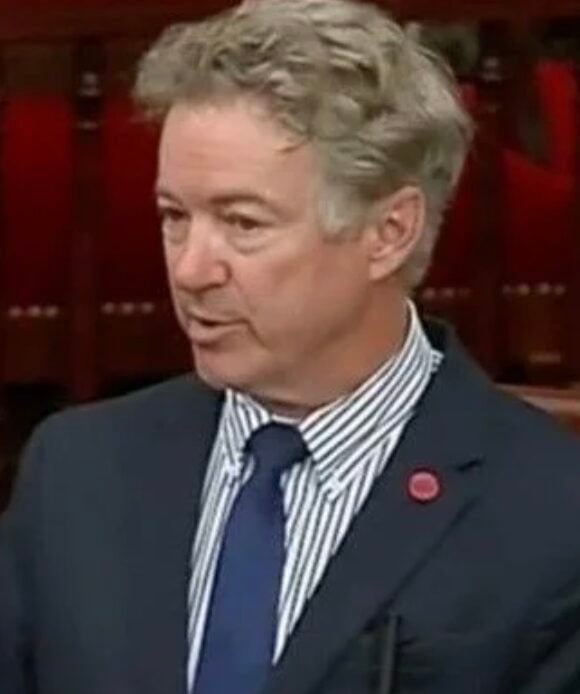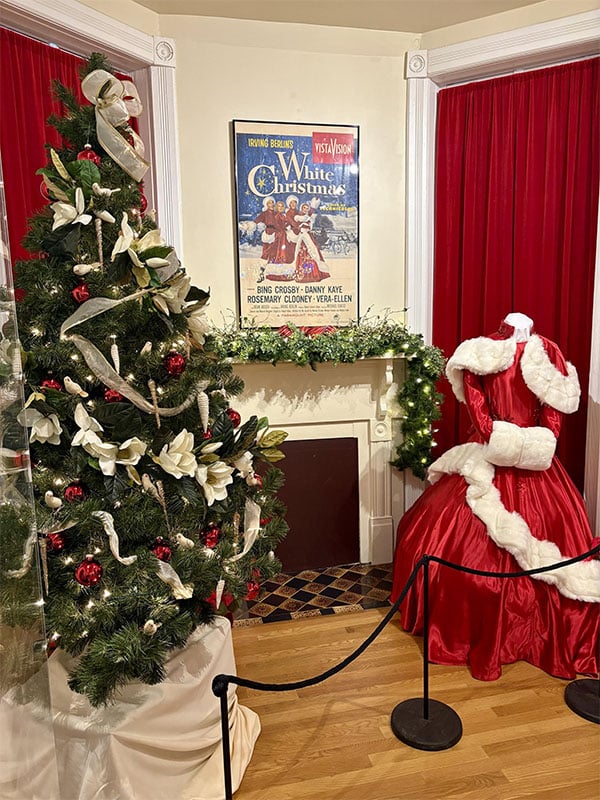By Cassi Schabell
NKyTribune reporter
A 15-foot dragon, graveyard headstones, skeleton bones, and a cauldron-stirring witch have transformed into cheerful Christmas figures alongside the latent, registered monarch butterfly waystation in the front yard of Jessica Schabell’s festive, Edgewood home. Connecting the withered foliage of the once buzzing summertime sanctuary, is a cold path constructed of the family’s rock collection. Soon enough, the Abominable Snowman and glowing tree lights will resume their dormant state in the attic, while springtime prepares to emerge and Jessica will resume her work — professing to the neighborhood children and adults the significance of saving the monarch butterflies.

“The milkweed is like its own little ecosystem. I have a shirt, have you ever seen my shirt that has all the different milkweed bugs that live on there? All the different kinds of bugs depend on the type of milkweed. The flowers themselves, bees, honey bees, all kinds of pollinators love it. Hummingbirds love it. It’s really cool, you see that there’s always hummingbirds out here. The little, you know the little hummingbird moths, the big ones? They’re smaller than a hummingbird, but bigger than a bee.”
With all four of her children at school, she weaves through the dormant garden while lecturing on the roles of the late-fall blooming joe-pye weed, whose flowers now stand brown, and other native host and nectar plants.
A few years ago, the scene was much different.
“Honestly the reason I got into it was Jake was diagnosed autistic in 2019. And the twins were already diagnosed. So, I had three kids diagnosed autistic in less than two years.”
During the school shutdowns in spring of 2020, Jessica was raising four-year-old twins diagnosed on the spectrum; a three-year-old diagnosed with autism; and a big sister in first grade.

COVID hit and Jessica developed the garden with her family. “It was huge. Except for Luke, Luke hates bugs. But all the other kids were every day, loving life in that garden. We raised hundreds of butterflies. The world was going through complete and utter devastation and I was the happiest I’ve ever been.”
“It’s cathartic for your soul. It humbles you in a way. When I was struggling with the kids. There is something that just, it reminds you how small you are in the world and that there are greater things going on.”
She walks through the front door where an overgrown puppy named Pirate is ready to bum-rush any visitor at the door. The fresh scent of a mom cleaning the house and wet leaves are breezing through an open window. By the door is a white mesh butterfly cage, held down with a chunk of limestone. Cocoons are attached to twigs where they will shortly be moved to the basement away from any home chemicals, and returned outside until hatching in the spring.
While Jessica recounts her family struggles and how she got involved, two bunnies pop out from underneath a cardboard box in the hallway and quickly return when they realize it’s not the children.

While scrolling through butterfly pictures on her phone, she stops to save a cricket.
“Oh my God what is that? A cricket? It’s huge! Is it a cricket? I think you get good luck if you let it go. My cats will eat it, so no, you got to go outside, you can’t be in my house.” She attempts to rescue him from the hardwood floor with her hands, but he slips behind her foot. “Where’d he go? Where’d he go?” She balances on her toes to avoid squashing the bearer of good-fortune. “You’ve got to go outside. That’s all I need is to step on you.”
With all this excitement, Pirate can hardly contain his desire to throw his 80 pounds of muscle and fur — paws first — onto any human that dares make eye contact.
He is ordered outside with the cricket.
Pirate is barking, watching through the glass door. He is keeping a safe distance from the cricket that stands between him and the door.
Jessica’s butterflies have positively impacted her community, but she is most proud of her children.

“My kids. Teaching my kids and the schools. They’re outside. You always hear kids are always inside, on their electronics and I think that my kids are always outside. And it teaches them such an appreciation. They’re so delicate, that even Jake, when he was three or four years old and letting it go, it teaches you a sense about life, you know what I’m saying? It’s been a way we can talk about death, whenever one of the butterflies died. They’re in heaven now. Topics that aren’t always easy. Or like a butterfly that was born different.”
Jessica’s home is one of almost 1200 registered waystations in Kentucky.
Monarchwatch.org says, “To offset the loss of milkweeds and nectar sources, we need to create, conserve, and protect monarch butterfly habitats. You can help by creating “Monarch Waystations” (monarch habitats) in home gardens, at schools, businesses, parks, zoos, nature centers, along roadsides, and on other unused plots of land. Creating a Monarch Waystation can be as simple as adding milkweeds and nectar sources to existing gardens or maintaining natural habitats with milkweeds. No effort is too small to have a positive impact.”
The National Wildlife Foundation’s Mayor’s Pledge says, “Mayors will commit to at least three action items (out of 30) that your community will initiate throughout the year to support monarch conservation. Mayors who complete eight or more actions will receive special recognition and become a member of the Mayors’ Monarch Pledge Leadership Circle and those that complete 24 or more actions will become a Monarch Champion City.”
Only nine cities in Kentucky have pledged to work on actions to support monarch conservation, four are in Northern Kentucky. The nine are Ashland, Covington, Edgewood, Florence, Frankfort, Lexington, Louisville, Newport, and Paducah.
Jessica is responsible for adding Edgewood to that list and plans to make them one of the top contributors in the state.
“With the development of roads, houses and pesticides, milkweed is just gone,” said Jessica. “Only one in every 100 butterfly eggs survive to be adults.”
She encourages all families to get their children involved and that it is a very manageable project.
“Ava loves to look for them. Every single one of them likes to release them. To putting one on your finger and watching it fly away. Ava likes to name them. They all like to find the eggs. Not so much Jake. They like to watch them transform. They go from being an egg, to being a teeny-teeny, tiny, little caterpillar, or larva, to forming their chrysalis, and then becoming a butterfly. To this day, we’ve seen hundreds and hundreds of butterflies emerge. Anytime that one is forming a chrysalis or one is starting to come out of the chrysalis as a butterfly, everyone will come out to see it, but Luke. Even Greg. Every time we release one, Greg’s like, ‘Why did you release it without me?’ And we’ve released hundreds.”






















